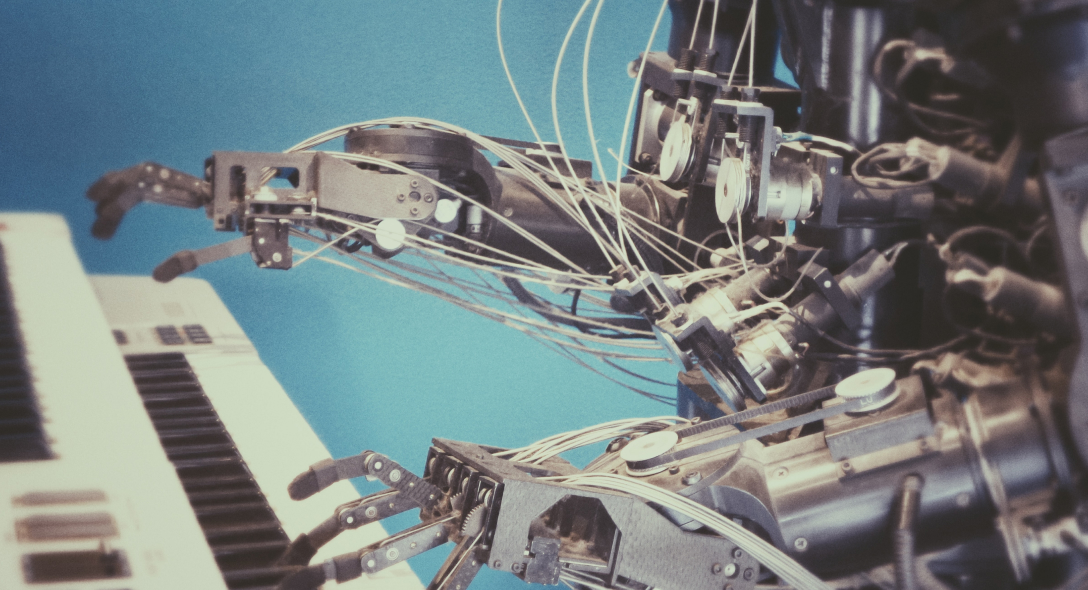A classic RPA bot copies human action, whereas AI simulates human intelligence through machines. By convention, AI-powered RPA is superior to traditional rules-based structured data automation with the use of technologies such as Optical Character Recognition (OCR), Text Analysis and ML, improving workplace experience. Let's see how this works
Italian Philosopher Giordano Bruno was burnt at stake in 1600 for allegedly believing in exoplanets. In April 2018, NASA’s Transiting Exoplanet Survey Satellite (TESS) was a survey mission to discover thousands of exoplanets. Moral of the story: Look ahead as a global leader and take a step in investing in the right technology, fearing not what others say, and lo! note to self: beheading doesn’t await you.
All over the world organizations tend to make themselves “digitally native” with digital transformation and robotic process automation (RPA), laying a strong foundational pillar for the future.
It is interesting to note the advent of this interesting game-changing technology, now at its peak, is said to contribute a financial impact of around $6.7 trillion by 2025. 53 percent of all occupations are estimated to be replaced by digital technology within the coming twenty years, according to the Swedish Foundation for Strat. Research. That is almost 300 million jobs within the OECD-region.
The convergence of RPA, artificial intelligence (AI), machine learning (ML), natural language processing (NLP), and cognitive platforms is potentially so disruptive that Klaus Schwab, founder of the World Economic Forum, calls it the “Fourth Industrial Revolution.” RPA is but several technological processes brought under one platform to deploy as and when needed for different automation processes.
Technically, according to The Institute of Electrical and Electronics Engineers Standards Association (IEEE SA), RPA refers to the use of a “preconfigured software instance that uses business rules and predefined activity choreography to complete the autonomous execution of a combination of processes, activities, transactions, and tasks in one or more unrelated software systems to deliver a result or service with human exception management.”
And Artificial Intelligence (AI) is “the combination of cognitive automation, machine learning (ML), reasoning, hypothesis generation and analysis, natural language processing and intentional algorithm mutation producing insights and analytics at or above human capability.”
Too much jargon? Let’s arrive at its base. A classic RPA bot copies human action, whereas AI simulates human intelligence through machines. By convention, AI-powered RPA is superior to traditional rules-based structured data automation with the use of technologies such as Optical Character Recognition (OCR), Text Analysis and ML, improving workplace experience.
How does cognitive process automation differ from traditional RPA?
Cognitive process automation (CPA) widens the application of RPA to more knowledge-based work, such as extracting information from unstructured sources and enhancing decision-making. Cognitive agents have a self-learning capability that enables them to act and learn from experience, from humans, and even on their own, thereby developing the ability to interact with their environment. CPAs can help with work that requires judgment and perception, enabling RPA to reach a new level, extracted from Journal Automation paper series in Financial services by Henley Business School and CAPCO Institute.
The transition from traditional RPA to cognitive RPA can bring out progression in characteristics such as sophisticated and intelligent functionalities, more qualitative benefits delivered by robots, and more specialized and niche applications.
While Traditional RPA automates rules-based transactional processes such as capturing or copying structured data, AI-powered RPA, makes it making decisions and predictions based on the rules that humans manually wrote (rules engine), and also based on results of trial and errors (machine learning). Simply put, traditional automation is process-driven, and AI and ML-powered RPA is data-driven. And what’s more?
Greater Customer Satisfaction:
Combining traditional RPA with AI and ML provides a more strategic perspective that can change the way businesses operate.
For example, one can see chatbots in different channels such as messaging apps (Facebook, Slack), SMS, text, and voice-based assistants (Alexa). When cognitive automation is put to use, machine learning predicts the process outcomes by identifying the patterns and prioritizes actions based on predicted outcomes. Natural Language Processing, speech, and image recognition can convert text, speech, audio, and images to structured information.
By the incorporation of CPA, exceptions, unstructured data, and self-improvements with Machine learning can be observed over time.
Processing Unstructured Data:
With the effective use of AI-powered RPA, unstructured data can be transformed into structured data, processing a wide range of documents and emails, and driving it to higher levels of automation. Voice recognition, text analysis, categorization and classification, sentiment analysis, and OCR and image identification can all be achieved with it.
Handling Exceptions without Human Interventions:
While traditional automation cannot cater to issues such as missing information, data in the wrong format, and slow response due to the internet, Cognitive RPA with Machine learning, has the potential to learn them.
For example, let’s assume that while submitting an automated KYC form in a financial institution, there is a discrepancy between two documents. In the first instance, AI-based RPA will present the case for human intervention and further processing and observes the pattern. Upon learning and validating how human customer service representatives handle the situation, cognitive RPA takes over from the next case.
Up next
How Auditing Process is Simplified in the Insurance Industry using RPA Skcript
/svr/how-ai-powered-rpa-can-work-over-traditional-rpa/
/svrmedia/heroes/how-ai-powered-rpa-can-work-over-traditional-rpa.jpg
Skcript
/svr/how-ai-powered-rpa-can-work-over-traditional-rpa/
/svrmedia/heroes/how-ai-powered-rpa-can-work-over-traditional-rpa.jpg
